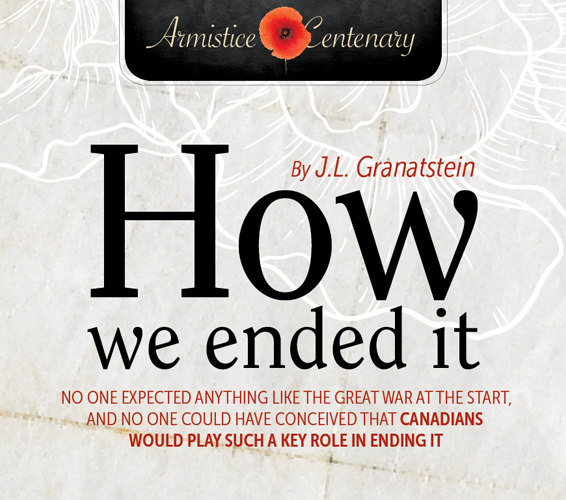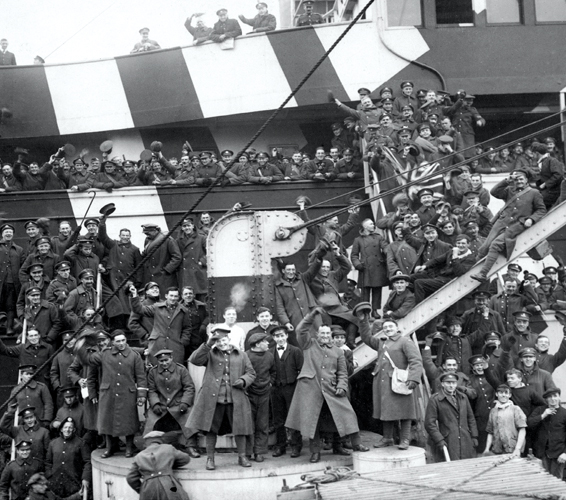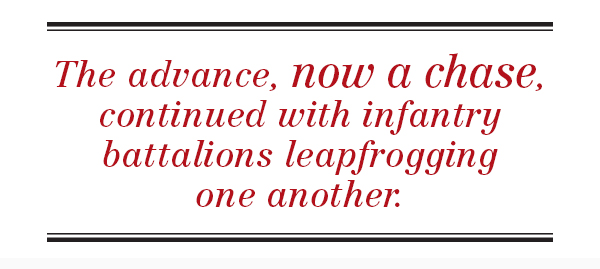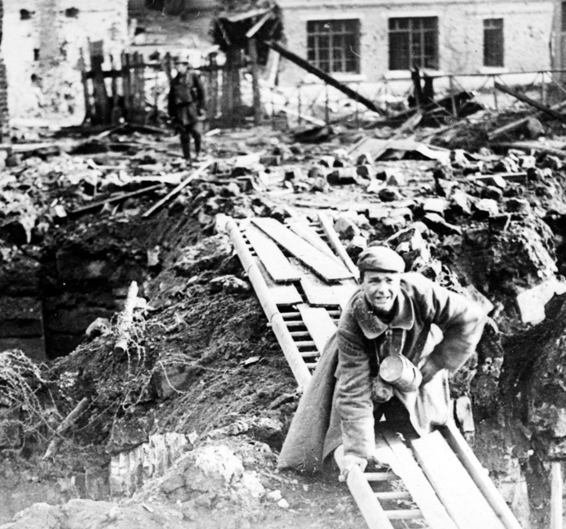
What a relief to parents of the boys serving!” wrote Lieutenant Walter Thomas Robus of Norwood, Ont., a few days after the First World War ended with Germany’s surrender on Nov. 11, 1918. “And what a relief to know the slaughter and suffering are over.”
Robus had enlisted in the 2nd Battalion (Eastern Ontario Regiment) of the Canadian Expeditionary Force in August 1914. He was wounded four times. “The Canadians finished wonderful,” he wrote, “Mons captured at last.”
For Robus—and for Canada—it had been a long, hard conflict.
Triggered by entrenched imperialist nationalism across Europe, treaties that assured mutually defensive alliances and, ultimately, the assassination of Archduke Franz Ferdinand of Austria while visiting Sarajevo, the war pitted the Triple Alliance of Germany, Austria-Hungary and Italy against the Triple Entente of Great Britain, France and Russia. And Canada was in it from the start.

Canadian troops arrive in Halifax [LAC/PA-135768}
Canada had no army to speak of when Britain declared war on Germany on Aug. 4, 1914. The 1st Division was raised quickly and was still a raw force when it faced the German gas attack at Ypres in April 1915. Somehow, it held the line and began to establish its reputation. As the Canadian commitment grew in size, so did its laurels. The force of two, then three, and finally four divisions fought on the Somme in 1916, captured Vimy Ridge, Hill 70 and Passchendaele in 1917, and then, recognized by all as a corps d’élite, fought through the Hundred Days campaign that won the war.
The Canadians had learned how to fight and win on the battlefield and had produced some extraordinary leaders. Sir Arthur Currie was only one. The land developer from Victoria had become a successful militia officer and was appointed a brigade commander in the First Canadian Contingent. He then proved he could learn in battle, and when the Canadian Corps was formed in September 1915, Currie took command of the 1st Division. After the victory at Vimy Ridge, and after British Lieutenant-General Sir Julian Byng was promoted to command Britain’s Third Army, Lieutenant-General Currie became the Corps’ first Canadian commander.
Until the very end of the war, the majority of the Canadian Corps was made up of men who had been born in Britain and had immigrated to Canada. But by late 1918, Currie’s four divisions were commanded by Canadian officers and all but the most senior staff officers were Canadian. Brigade and battalion commanders were almost all Canadian, as were the officers serving under them.
Strikingly, the Canadian Corps and its superb battlefield record had a powerful Canadianizing influence—wherever they had been born, the soldiers knew they were first-rate and knew they were Canadians.

Perusing the good news on Armistice Day in Toronto (above, from left) are Mrs. J. Fraser, Joseph Fraser Jr., Miss Ethel James, Frank James and Norman James. [City of Toronto Archives]
By the summer of 1918, the Canadian battalions’ ranks were full and more reinforcements were training in England and en route from Canada. The Corps was fortunate to be holding the line in relative safety near Vimy Ridge when the Germans’ spring offensives hit hard to their south and north. By this time, the Canadians had undergone hard training in the new tactics of open warfare and in working with tanks and the Royal Air Force. The artillery had become very skilled in locating and destroying enemy guns and in using powerful rolling barrages to lead the infantry onto their objectives. The Canadian Corps was primed and ready for its greatest victories.
And victories there were. Moved in secret from their lines near Arras, the Canadians, joined by Australian, British and French formations, smashed the enemy at Amiens on Aug. 8. Unheard of gains on the ground, uncounted thousands of prisoners, and despair among the enemy resulted.
“The black day of the German Army,” General Erich von Ludendorff called it. After Amiens, Germany had no hope of victory.
The German soldiers, however, continued to fight with skill and courage. Back on the Arras front, the Canadians attacked again in late August, moving through the trenches and bunkers before the Drocourt-Quéant Line. The fighting was fierce, the casualties very heavy, but the Corps broke through the line, forcing the Germans to retreat eastward behind the Canal du Nord. Currie called this “one of the finest performances in all the war,” and wrote in his diary that this was a greater victory even than Amiens.
Crossing the Canal du Nord was Currie’s next objective, and he fashioned a daring plan. The attack was to cross a dry section of the incomplete canal and the infantry would then fan out north and south. His British superiors were doubtful, but Currie persisted, and his soldiers proved him correct, getting across the barrier and pushing forward. It was, Currie wrote, “the bitterest fighting we have ever experienced….” In another letter, he wrote that “we have never known the Boche to fight harder. He is like a cornered rat.” But the Canadians beat the enemy and soon liberated Cambrai, the key German rail, road and supply centre in northern France. The Kaiser’s troops were now in full retreat.
There was one last set-piece attack at Valenciennes, just west of the Belgian border. Mont Houy, overlooking the town, fell to a massive artillery barrage and an attack by a single brigade. The advance, now a chase, then continued with infantry battalions leapfrogging one another and trying to keep up with the retreating enemy. Useful for once, cavalry moved ahead while armoured autocars from motor machine gun brigades added firepower. By Nov. 9, the Canadians were on the outskirts of Mons, Belgium, where the British Expeditionary Force had first faced the Germans in August 1914.

German envoys were now talking to Marshal Ferdinand Foch, Commander-in-Chief of Allied Forces, suing for terms. They signed the armistice—in reality a German surrender—early on the morning of Nov. 11, by which time the Canadians had liberated Mons. At 11 a.m., the guns fell silent.

A German prisoner crosses a canal in Valenciennes, France, in November 1918. [DND/LAC/PA-003383]
The war’s tragedies seemed unending. The Spanish Flu pandemic was ravaging the ranks, sickening tens of thousands and killing many. Soldiers who had survived the fighting died, while family and friends at home also succumbed.
Canada had played its full part and more in the Great War, its citizen soldiers transformed into fierce instruments of war. Their victories were legion; their casualties enormous: more than 66,000 dead, almost 175,000 wounded. Sadly, the open warfare of the last 100 days was terribly costly, with 45,000 casualties—almost 20 per cent of the total—occurring in just over three months of bitter fighting. Nonetheless, the results of those battles were crucial to winning the war, and they were almost certainly the greatest of Canadian military achievements. Currie’s Canadian Corps deserves its high place in the nation’s history.
Who signed the armistice?
The Allies’ two signatories were:
Marshal Ferdinand Foch of France, Commander-in-Chief of Allied Forces
Admiral Rosslyn Wemyss of Britain, First Sea Lord
Other members of the delegation included:
General Maxime Weygand, Foch’s chief of staff. He read out the armistice conditions to the Germans
Rear-Admiral George Hope, Deputy First Sea Lord
Captain Jack Marriott, Naval Assistant to the First Sea Lord
Germany’s four signatories were:
Matthias Erzberger, a secretary of state. As head of the German delegation, he signed the armistice
Count Alfred von Oberndorff, foreign ministry
Major-General Detlof von Winterfeldt, army
Captain Ernst Vanselow, navy

Signatories in cramped quarters: Allied and German signatories met in a rail car on a siding northeast of Paris. from left: German Captain Ernst Vanselow, German Count Alfred von Oberndorff, German Major-General Detlof von Winterfeldt, British Captain Jack Marriott, German secretary of state Matthias Erzberger, Rear-Admiral George Hope, British Admiral Rosslyn Wemyss, Marshal Ferdinand Foch (standing) and General Maxime Weygand. [Pillard/National Trust/836535]
Advertisement





















